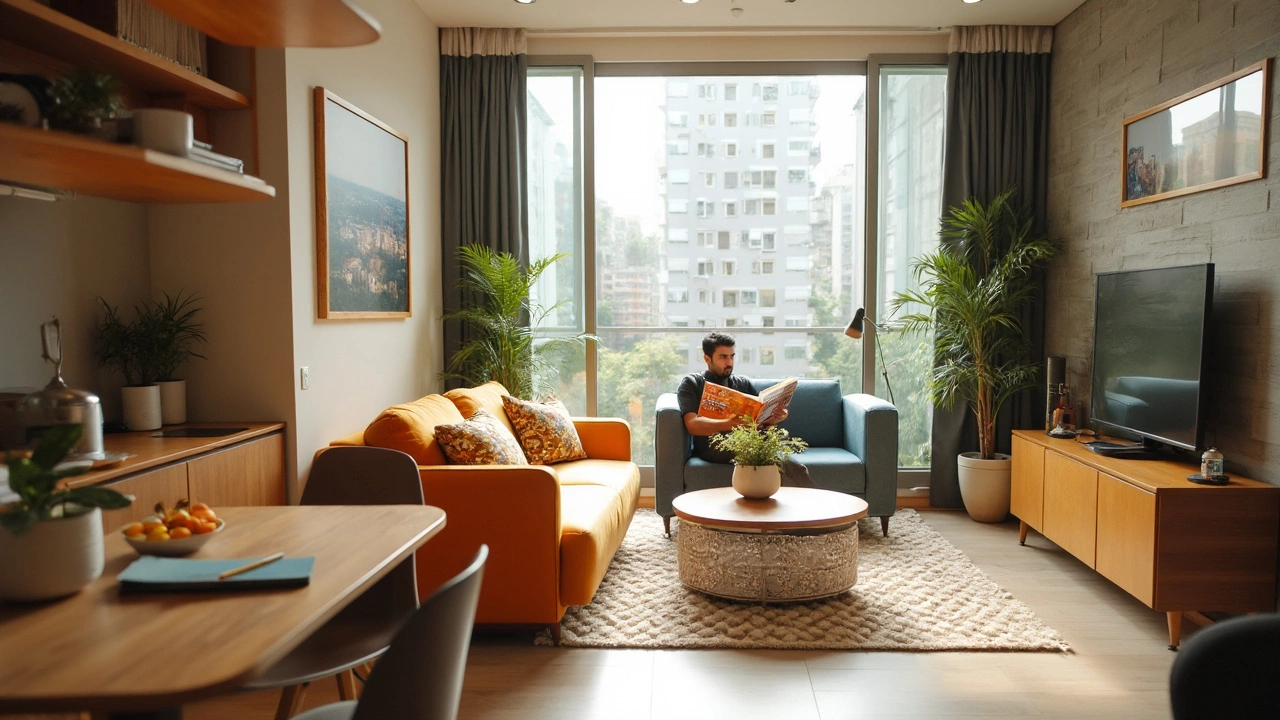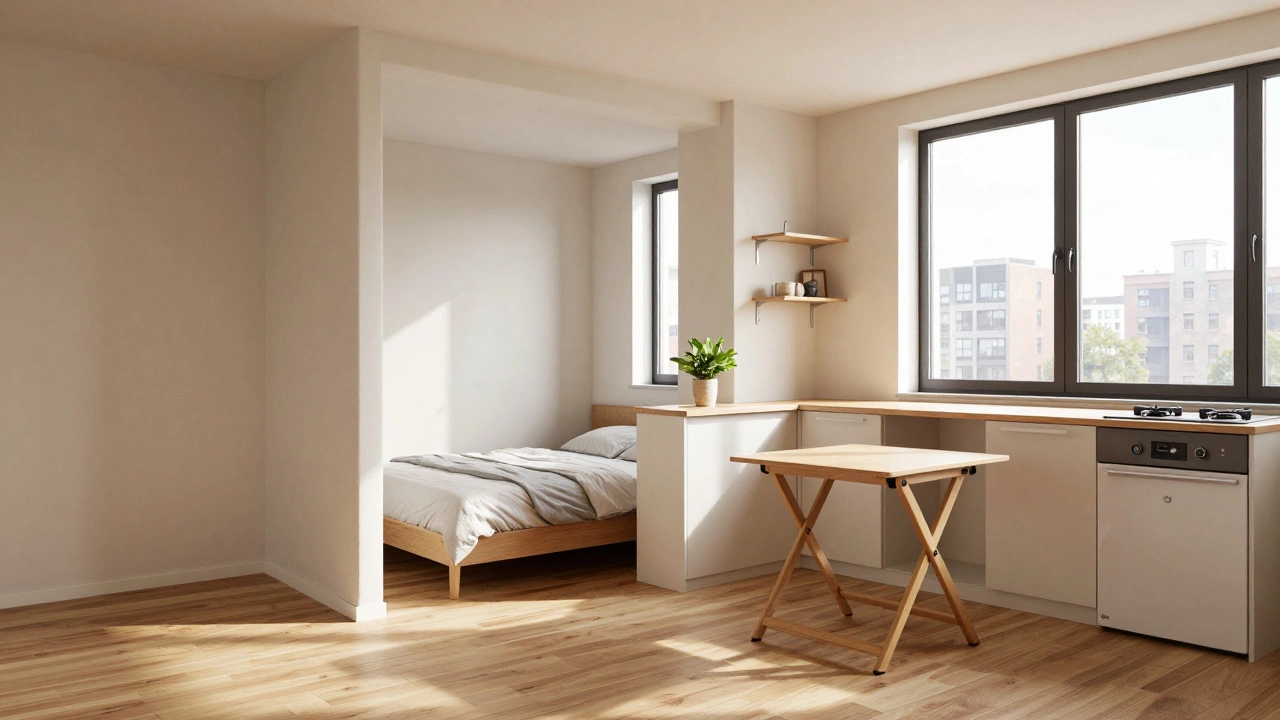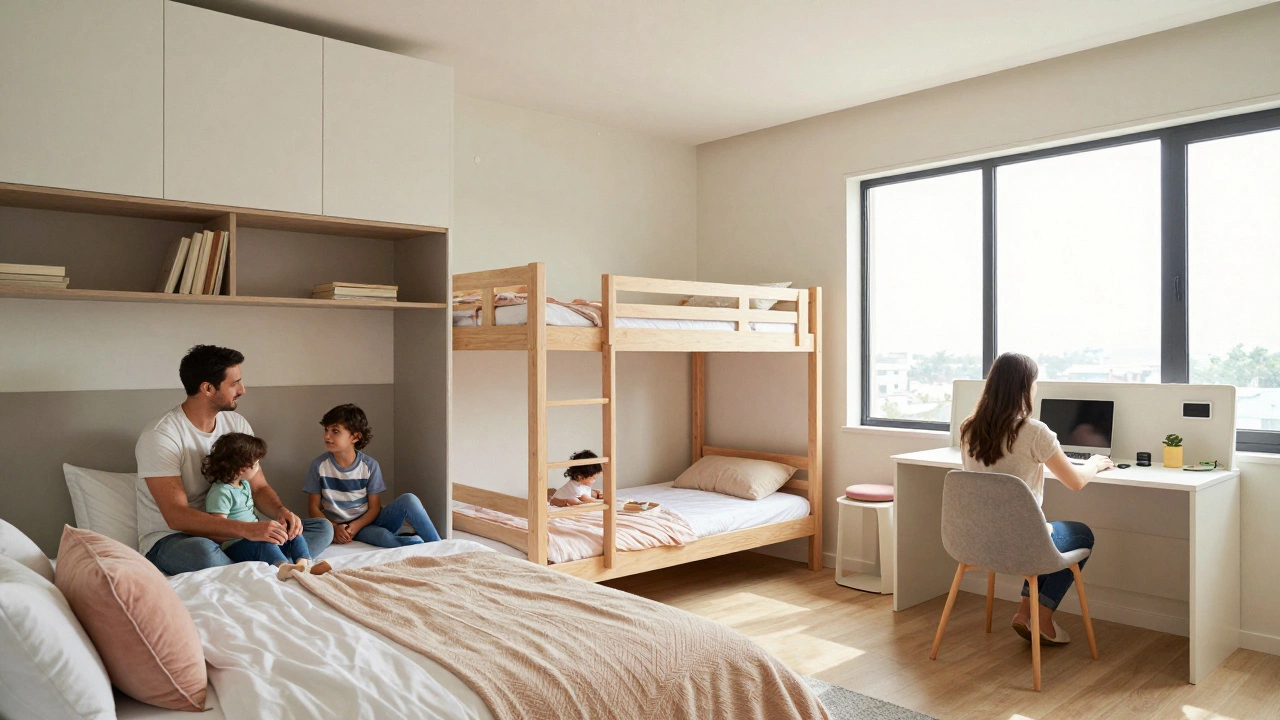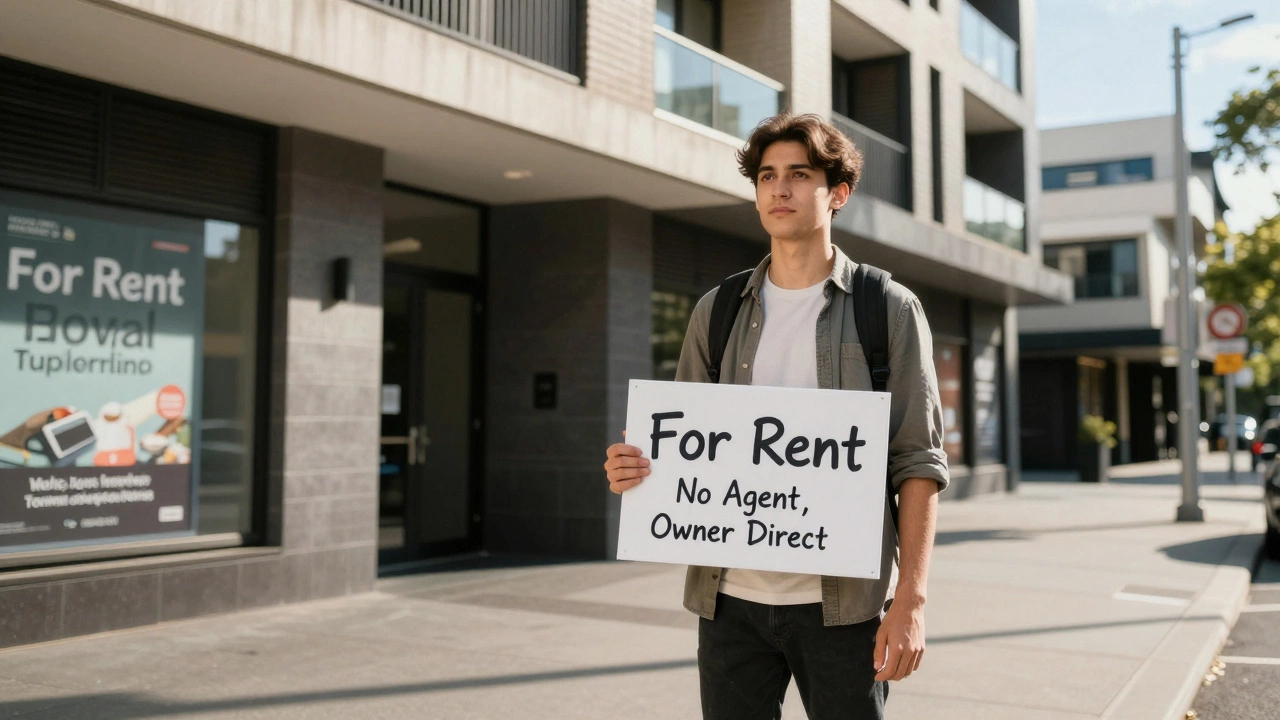Ever heard someone mention a T0 apartment and wondered what on earth that means? You’re not alone. This isn’t just another buzzy term tossed around by estate agents—it’s an actual type of housing that’s pretty common in some parts of the world, especially in Europe and a handful of major cities.
Basic idea? A T0 apartment is a single-room flat with everything you need, packed into one cozy space. No separate bedroom, just a living area that doubles up for sleeping, eating, and maybe even working. It’s different from a 2BHK, which means two bedrooms, a hall, and a kitchen—all clear, separate spaces. You can think of a T0 as a studio, but with a fancier label stuck to it.
If you’re hunting for a new place, skipping the jargon and understanding what you’re actually getting can save you from mismatched expectations. In the world of real estate, knowing the difference between a T0 and a 2BHK could mean less stress on moving day—and maybe even a happier bank account.
- What Does T0 Apartment Mean?
- T0 vs 2BHK: The Real Differences
- Who Should Think About a T0 Apartment?
- Setting Up a T0: Tips to Maximize the Space
- Things To Check Before Renting or Buying a T0
What Does T0 Apartment Mean?
A T0 apartment is just a straightforward, single-room unit. There's no separate bedroom—the living and sleeping areas are all in one spot. Usually, you'll have a small kitchen, sometimes tucked into a corner or right along one wall. The bathroom is the only part that's closed off with its own door. This type of apartment is also called a studio flat in a lot of countries.
The "T" in T0 stands for "Typology," which is a term often used in Europe when describing apartments. The number "0" means the place has zero separate bedrooms. So, T0 is just real estate code for an open-plan setup where you eat, sleep, and relax in the same area.
Compared to bigger apartments—like T1 (one bedroom) or T2 (two bedrooms)—a T0 is the simplest and smallest on the list. These places are most common in city centers, campus housing, and busy urban neighborhoods where space is always tight. In fact, research in 2023 from Lisbon’s housing market showed that nearly 29% of central city rentals up for grabs were T0s, mostly because students and young pros want affordable spaces close to work or college.
Here’s a quick table to spell out the main traits of a T0 apartment compared to other popular apartment types:
| Type | Bedrooms | Main Spaces | Average Size (sq ft) |
|---|---|---|---|
| T0 (Studio) | 0 | One open space + separate bathroom | 250–400 |
| T1 (1BHK) | 1 | Bedroom, hall, kitchen, bathroom | 450–700 |
| 2BHK | 2 | 2 bedrooms, hall, kitchen, bathroom(s) | 750–1200 |
If you’re checking out listings, you might spot "T0" tagged onto places meant for solo renters or students. The main draw? These flats are usually the most budget-friendly and easy to keep tidy—less space means less cleaning and smaller utility bills. But don't expect tons of storage or a host of separate rooms. It's a pure, back-to-basics living space, best for people who like keeping things simple.
T0 vs 2BHK: The Real Differences
If you’re stuck choosing between a T0 apartment and a 2BHK, it’s not just about the number of rooms. There’s a world of difference in how these spaces are used, what you get for your money, and who they actually suit.
First up, the layout is the real game-changer. In a T0 apartment, you’ll find everything—bed, couch, maybe a desk, all in a single open space. 2BHK stands for two bedrooms, a hall, and a kitchen, so you get dedicated rooms for sleeping, living, and cooking. You can literally shut the bedroom door if you want privacy, or if you're working from home while someone else is asleep.
| Feature | T0 Apartment | 2BHK Apartment |
|---|---|---|
| Bedrooms | Studio (no separate bedroom) | 2 separate bedrooms |
| Kitchen | Usually kitchenette, part of main space | Separate kitchen |
| Living Area | Same as bedroom | Separate living/hall area |
| Space (Avg in major Indian cities) | 200–400 sq ft | 700–1100 sq ft |
| Usual Rent (Rs/month, Metro Cities) | ₹8,000–18,000 | ₹22,000–50,000 |
| Utility Bills | Lower | Higher |
Now, space isn’t just about the square footage. A T0 forces you to stay organized or else you’ll be tripping over your own stuff. A 2BHK comes with room for guests, hobbies, kids, or that work-from-home station everyone seems to need these days.
Another thing—privacy. In a T0, there’s no closed room to retreat to. If you live with someone else, the lack of walls might get old pretty quick. In a 2BHK, you can have family over, close a door for some quiet, or have a friend stay the night without cramping your style.
When it comes to money, running a T0 is usually lighter on your wallet. Not just rent, but also power, water, and even furniture costs. But if you’re planning to live with family or flatmates, the 2BHK makes more financial sense per head—even if it costs more upfront.
So yeah—if you want simple, minimal, and cheap, T0 is a real option. Need privacy, space to grow, or have more than one person to house? 2BHK wins out, hands down.
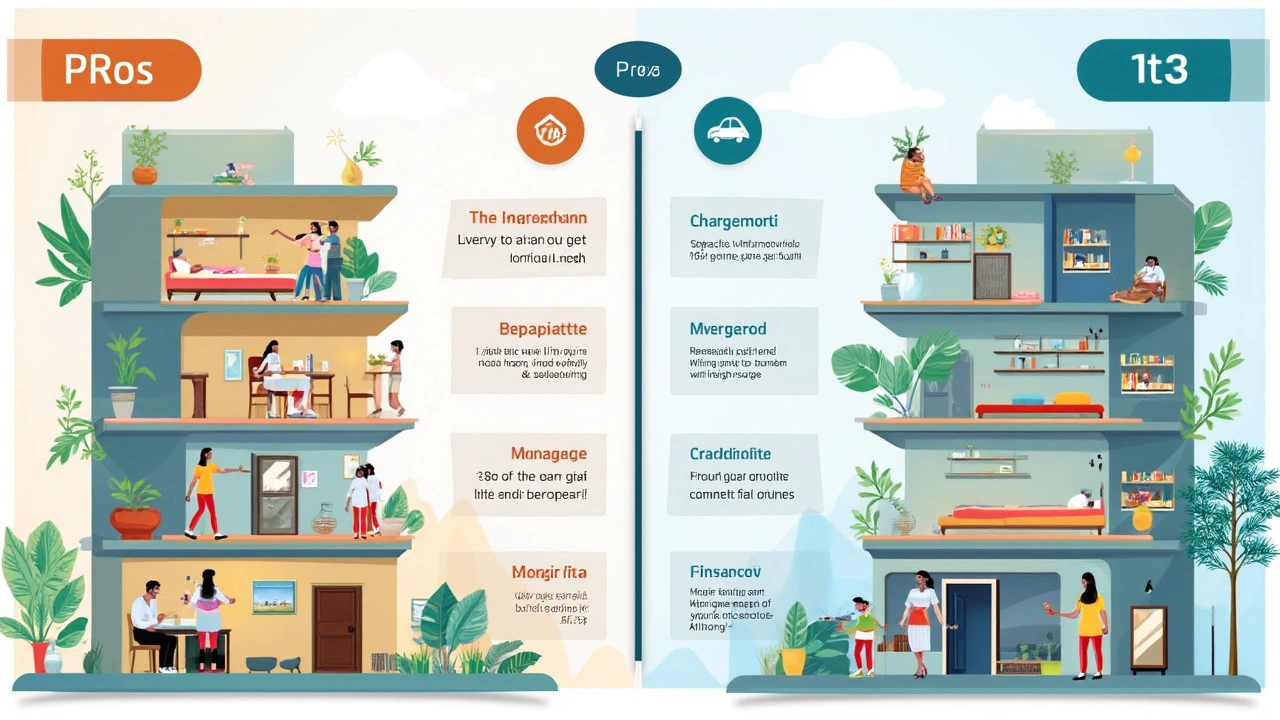
Who Should Think About a T0 Apartment?
If the thought of a big place with spare rooms sounds unnecessary, a T0 apartment could make your life simpler. These spots are mainly made for people who don’t mind living in a small area where everything—the bed, table, and even your workspace—shares one open plan. Students, young professionals, and anyone just starting out in a city often go straight for a T0, especially when money’s tight or they want to be right in the middle of the action.
You’ll find that folks who hate long commutes or who have jobs in city centers pick T0s for convenience. Single travelers and digital nomads love them too. Why waste cash on extra space if you’re hardly ever home or you travel light? T0s are also a go-to for couples who don’t need much privacy or want to try living together without a huge commitment—sort of like a test drive for sharing a home.
Older adults sometimes move into T0 apartments when they want to downsize. Less stuff, less cleaning, and lower bills—who wouldn’t be tempted? Some families book T0s for short city trips (think Airbnb) when all they need is a place to crash after sightseeing. Quick fact: these are much more common in dense and expensive cities like Paris, Lisbon, or Mumbai, where real estate comes at a premium.
- If you value keeping life affordable and simple, a T0 checks that box.
- If you like everything you need in arm’s reach—or just hate chores—this setup makes sense.
- If you move often or only need a place for a few months, T0s make relocation easy and cheap.
Bottom line, a T0 apartment is smart for anyone who wants flexible, no-fuss city living without paying extra for unused space. Before you jump in, though, be ready for compromises—privacy and room for guests isn’t really part of the deal.
Setting Up a T0: Tips to Maximize the Space
When you live in a T0 apartment, you really have to think about how to use each part of the room. There’s no spare bedroom to toss things in or a dining area you can ignore. Every single square foot counts.
The first rule? Go for furniture that does double duty. A sofa bed is the classic pick here—it’s a couch by day and your main sleep spot at night. Drop-leaf tables are a win too; they give you the option to expand for a quick meal or fold down to save room. Wall-mounted shelves free up precious floor space and help keep the area tidy.
Storage is your next big challenge. Under-bed boxes or pull-out drawers are lifesavers for hiding away clothes or shoes. Hooks on walls or the back of doors can keep bags, coats, or hats off the ground. Get creative with what goes on the walls—think pegboards for kitchen bits or floating shelves for books and plants.
Zoning can really help a T0 apartment feel less cramped. Try using lightweight room dividers, an open bookshelf, or even just a rug to separate a sleeping and lounging space. You’ll trick your brain into feeling like you have actual rooms, even if technically you don’t.
If you’re worried about light, skip heavy curtains. Go for sheers or blinds that let natural light in. The brighter your T0, the bigger it’ll feel. And yes, mirrors can actually help—one on the wall can spread that sunlight and make everything look more open.
Here are some “small-space wins” when it comes to picking stuff for a T0:
- Foldable desks and chairs for work-from-home setups
- Murphy beds if you want max floor space
- Stackable storage boxes or baskets
- Multipurpose kitchen gadgets to reduce clutter
- Hooks and hangers for vertical storage
Curious how folks actually use their T0 space? Here’s a quick table from a 2024 urban renter survey (600 renters, ages 20–35):
| Space-saving solution | Percentage of T0 renters using it |
|---|---|
| Sofa beds | 67% |
| Wall shelves | 82% |
| Under-bed storage | 74% |
| Room dividers | 55% |
| Lightweight, foldable furniture | 88% |
Honestly, the main thing is to keep it simple. If you don’t use it every week, ask yourself if it needs to have space in your T0 at all. That one question alone can free up a ton of room.
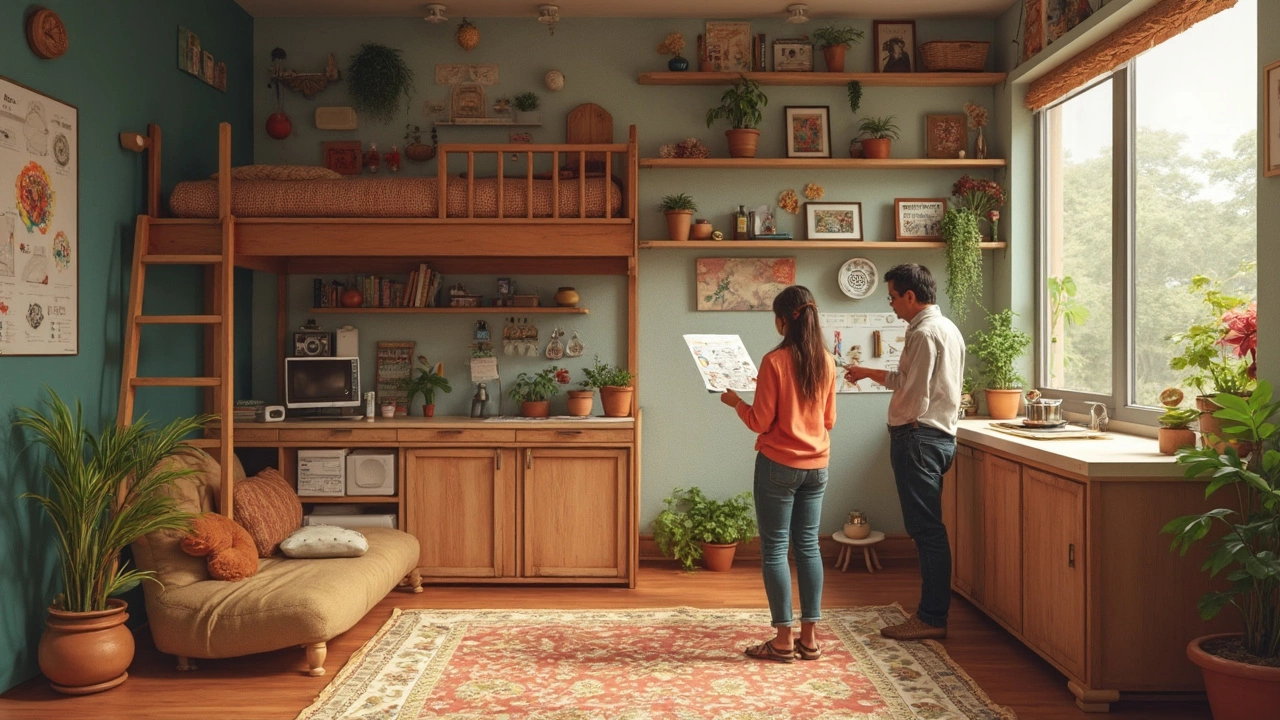
Things To Check Before Renting or Buying a T0
Jumping into a T0 apartment? Pause for a quick checklist before you sign anything. It’s a different setup than the usual two-bedroom flat, so you need to keep your eyes open for a few things that might get missed on a first visit.
- T0 apartment size: These places are compact. Average size in urban India or Portugal? You’re looking at 25–40 square meters max. Don’t just go by the pictures—ask for exact measurements and, if you can, visit in person with a measuring tape.
- Natural light: Small spaces can feel even tinier if they’re dark. Find out how many windows you’re getting and what direction they face. North-facing windows tend to get less sunlight—some people don’t mind, but it’s good to know.
- Noise and privacy: With everything in one room, thin walls or noisy neighbors can really get on your nerves. Try to visit at different times of day or ask around about typical noise levels—bonus points if you spot double-glazed windows.
- Kitchen setup: Kitchenettes work in theory, but are they actually usable? Check counter space, outlets, and what kind of cooktop or oven is included. Tiny fridges are common in T0s—decide if that fits your lifestyle.
- Storage options: You won’t get walk-in closets. Use a checklist: built-in wardrobes, kitchen drawers, shelves, and bathroom storage. If it looks limited, can you bring in your own storage furniture?
- Ventilation: Good airflow is crucial in small rooms, especially for air quality and during cooking. See if there are working exhaust fans or at least windows you can open easily.
- Building amenities: Some T0s are in old buildings with outdated plumbing or no elevators. Make sure there’s decent security, clean common areas, and functional lifts if you’re more than two floors up.
- Legal stuff: Confirm with your agent or landlord that all paperwork is legit, including occupancy certificates and local authority registrations—some T0 setups bend the rules to fit more people in, which can be risky.
- Resale/rental demand: If you might move in a couple of years, check online listings for how often T0s turn over in that building or neighborhood. Quick turnover could mean issues, but it also keeps your options open.
Here’s a quick look at average stats from a survey of T0 apartments in Bangalore and Lisbon:
| City | Average Size (sqm) | Avg. Monthly Rent (INR/EUR) | Building Age (years) |
|---|---|---|---|
| Bangalore | 28 | ₹16,500 | 10 |
| Lisbon | 32 | €800 | 45 |
Bottom line—don’t let the cute layout distract you. Double-check the space, ask about amenities, and make sure you’re not sacrificing essentials for a chic address. A little homework upfront goes a long way when you’re dealing with a T0.
